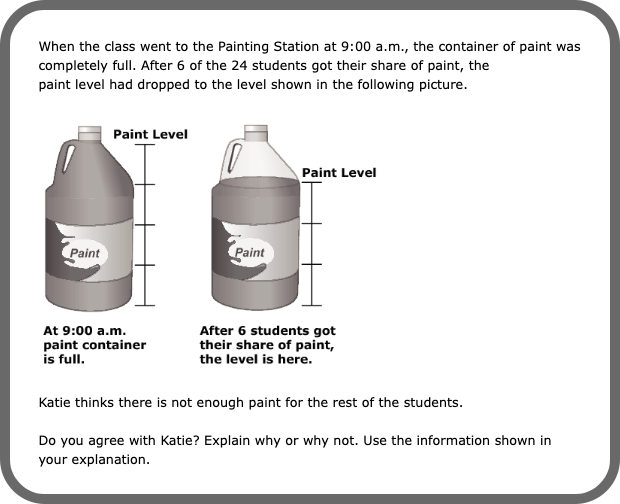
Orange County students have once again outpaced their peers on state assessments, surpassing California’s averages in English, math and science.
Data released on Thursday by the California Department of Education showed that students in the county’s 29 local districts and charter schools not only outperformed their state counterparts by significant margins but also scored higher than seven neighboring counties across all grade levels.
Still, the results highlighted the need for more focused support, particularly for vulnerable student groups including foster youth, English learners and students experiencing homelessness.
“While assessment scores don’t tell the whole story of achievement, they serve as a big-picture barometer to show how well our efforts are advancing the progress of all learners,” Orange County Superintendent of Schools Dr. Stefan Bean said. “These results are reflective of our successes and, crucially, the areas where we must intensify our efforts in collaboration with the districts we serve and other educational partners.”

(Courtesy of sampleitems.smarterbalanced.org)
In the spring, nearly 2.9 million students from grades three through eight and 11 took rigorous online assessments, including Smarter Balanced exams for English language arts and math, as part of the California Assessment of Student Performance and Progress, or CAASPP.
This statewide accountability system measures how well students are grasping educational standards in multiple subjects, enabling educators to track progress and pinpoint areas where more targeted interventions are necessary.
It’s important to note that Smarter Balanced questions often go beyond traditional multiple-choice formats to include a variety of question types, such as short answers, essays and problem-solving tasks that require higher-order thinking skills. The goal is to assess students’ ability to analyze information, apply concepts, explain their reasoning and think critically about complex problems.
OC leads the way
In Orange County, 58 percent of students met or exceeded the standards in English language arts this year, meaning they demonstrated proficient or advanced grade-level knowledge and skills. That’s 11 points higher than the statewide average of 47 percent. Year-over-year comparisons revealed modest gains in grades five and six in 2024, while scores in grades four, seven, eight and 11 remained unchanged.
In mathematics, the gap between Orange County and the state was even wider, with 48 percent of local students meeting or exceeding grade-level standards compared to 36 percent. From 2023, OC scores increased by at least one percentage point across all grade levels, except for grade four, which held steady at 54 percent.
CAASPP results were also published for the California Science Test, which was given to students in grades five, eight and high school. Forty-one percent of Orange County students met or exceeded grade-level since standards, beating the state average of 31 percent.
In all three subject areas, Orange County students outperformed peers at every grade level when compared to the seven Southern California counties of Imperial, Los Angeles, Riverside, San Bernardino, San Diego, Santa Barbara and Ventura. In math, Orange County’s scores were at least six percentage points higher than the next highest-performing of these counties.
Despite the overall results, achievement gaps widened locally. Specifically, smaller percentages of Orange County foster youth, English learners and students who are homeless met or exceeded the standards in English and math in 2024.
The path forward
Dr. Bean, who was sworn in as county superintendent in July, recently introduced an ambitious strategic plan for the Orange County Department of Education that aims to bolster district support and enhance educational opportunities across the county — including for the most vulnerable populations.
Termed the 5-3-1 Strategic Plan, it emphasizes five key initiatives, including expanding career technical education opportunities, fostering emotional intelligence, integrating AI in education, ensuring school safety and promoting innovative funding opportunities. The plan also outlines three support objectives designed to strengthen the capabilities of local school districts as they manage educational policies, fiscal challenges and the pursuit of academic excellence.
The county superintendent underscored his commitment to taking a data-driven approach to evaluating the effectiveness of OCDE’s strategic initiatives and adapting to changing educational needs.
“Assessment scores should not be viewed as endpoints,” Bean said, “but rather as part of a continuous feedback loop that informs ongoing improvements in our educational systems and outcomes.”
Beneath the surface
A deeper dive into the CAASPP data reveals a number of trends and areas that warrant further analysis. For example, skills like reading, listening, and research and inquiry have been trending upward in Orange County since 2019, but writing skills have declined and remain below pre-pandemic levels.
In math, gains can be seen over the same span in the areas of communicating reasoning, problem-solving and data analysis, as well as concepts and procedures.
“The OCDE STEM team is excited to continue to support continued growth in mathematics outcomes for all students, especially as Orange County districts and charter schools approach the opportunity to adopt updated instructional materials aligned to the updated Mathematics Framework for California Public Schools,” OCDE STEM Administrator Holly Steele said.
Along with math, English and science, the 2024 CAASPP also included results from the English Language Proficiency Assessments for California, or ELPAC, which is given to all English learners.
While more than two-thirds of English learners in Orange County showed at least moderate proficiency in speaking and understanding English in 2024, the percentage of OC students with well or moderately developed English skills dropped from 56 percent in 2023 to 52 percent a year later, underscoring the need for more support for English language learners. The state average was 47 percent.
California sees gains
In California, the percentage of students who met or exceeded standards ticked up slightly across all subjects, and officials pointed to progress in closing equity gaps for socioeconomically disadvantaged learners, as well as Black and Latino students.
State Superintendent Tony Thurmond credited key investments, including funding for reading coaches, intensive tutoring programs, extended school days and professional learning for educators.
“I commend California’s students and educators for their hard work and continued growth in academic achievement across the state,” Thurmond said. “We know the high potential of all California’s students, and we still have a ways to go to ensure that every child is supported to build strong academic skills and access a bright future.”
In its news release on Thursday, the state’s Education Department highlighted several examples that suggest a blueprint for further acceleration.
Benicia Unified was among them, reporting a 7.7 percentage point increase in math scores that was attributed to the hard work of staff and students along with districtwide professional learning and an instructional coach.
Compton Unified saw improvements across all subjects, bolstered by expanded tutoring and professional development, while Los Angeles Unified, which invested in measures aligned with the California Multi-Tiered System of Support framework, achieved increases in English and math.
More work to do
Each year, CAASPP scores provide data for the California School Dashboard, an online platform that’s released in December with color-coded gauges and various visual icons that provide a comprehensive — and public — view of school performance.
Beyond promoting transparency, the dashboard influences local decision-making and educational investments. For instance, test results assist district leaders in assessing the effectiveness of initiatives like expanded learning opportunities and targeted interventions.
For districts that don’t meet their performance goals, the state has established a structured intervention process. County offices of education like OCDE provide what’s known as “differentiated assistance” to help districts tackle specific challenges and ensure that the needs of all students are met.
This work is in addition to the general support provided by OCDE, which offers training and technical assistance in alignment with the California Multi-Tiered System of Support and leads other key initiatives.
“Much of the CAASPP data is trending in the right direction while still not reaching pre-pandemic levels,” said Jonathan Swanson, OCDE’s director of Curriculum, Instruction and Academic Enrichment. “We still see areas of needed growth. It is important to OCDE that all students excel, and we have work to do in order for that to happen.”
For more information on the California Assessment of Student Performance and Progress System, visit the CAASPP page on the California Department of Education’s website. To find scores for individual schools and districts across the state, visit caaspp-elpac.ets.org.
